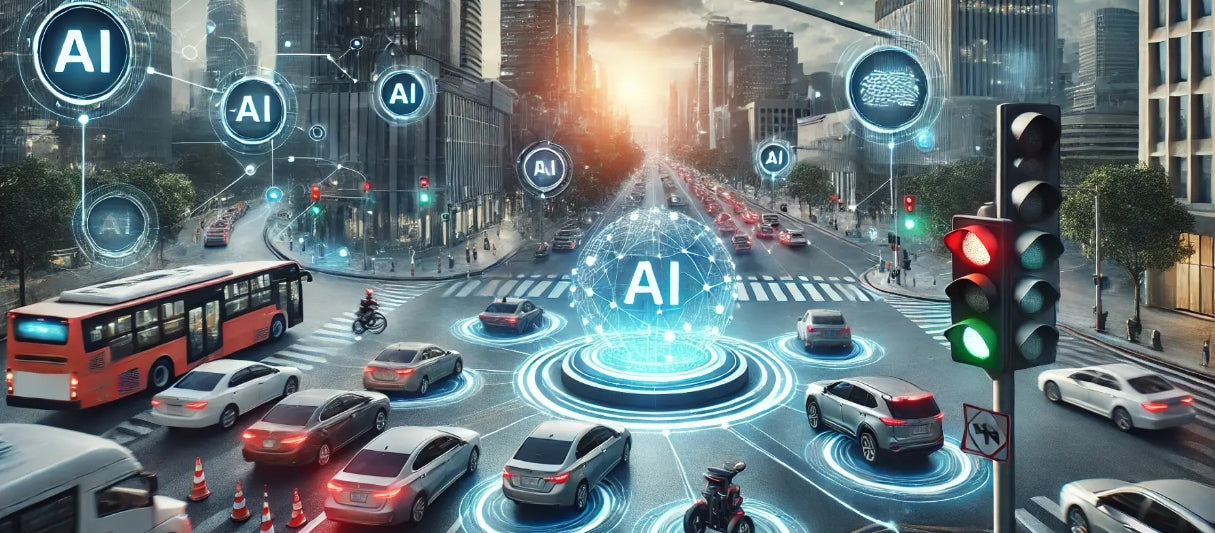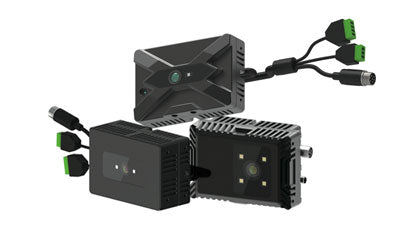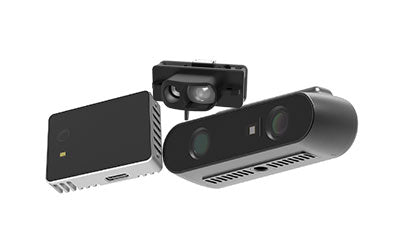TOF Perception Networks in Smart Cities: Creating Safer Digital Spaces

As global digitalization accelerates, the construction of smart cities is becoming a central focus for urban development. Behind these emerging 'digital spaces,' a critical sensing technology is quietly playing a pivotal role—TOF (Time-of-Flight) perception networks. As a key tool for building intelligent, secure, and efficient urban environments, TOF cameras and sensors are driving technological innovation across multiple domains, including security, crowd monitoring, and traffic management.
The Demand for Spatial Perception in Smart City Development
Building a smart city involves more than just upgrading data collection, computation, and management systems—it also requires precise acquisition and dynamic perception of 'spatial information.' With growing urban population density, increasingly complex human-vehicle interactions, and heightened demands for public safety and efficient management, traditional 2D cameras and basic infrared sensors are no longer sufficient.
In this context, devices based on time of flight sensing—such as TOF 3D sensors, RGBD cameras, and 3D depth cameras—have become essential components of next-generation urban perception networks. By emitting and receiving infrared or laser pulses, these devices accurately calculate the time difference between emission and reflection to obtain 3D depth data. This fundamental 'what is a time of flight sensor' principle empowers the devices with robust three-dimensional sensing capabilities and significantly enhances environmental understanding and response speed.
Compared to traditional video surveillance, 3D sensing systems offer superior scene comprehension: they can precisely detect the position, movement direction, and behavioral patterns of humans and objects in space. This enables advanced functions such as 3D vision inspection, trajectory tracking, and behavior analysis. They can operate continuously under all lighting conditions—unaffected by shadows, background noise, or occlusion—making them ideal for complex environments such as subway stations, commercial areas, airports, and overpasses.
Even more promising is the decreasing cost of these sensors. Some devices are approaching the price levels of inexpensive thermal imaging or cheap heat cameras, making large-scale deployment increasingly feasible. Furthermore, some TOF systems support flexible adaptation to diverse environments via YAML configuration, dramatically improving deployment efficiency and manageability.
TOF perception networks are no longer optional—they are becoming foundational infrastructure for smart city operations. From urban security and public services to energy management and digital twin systems, all rely on high-precision, low-latency, and real-time spatial sensing systems.
How TOF Perception Technology Enhances Security and Crowd Monitoring in Smart Cities
TOF (Time of Flight) perception technology measures the time it takes for light to travel from the source to an object and back to the sensor, allowing it to calculate depth information and construct high-precision 3D models. Compared to traditional 2D imaging systems, TOF offers superior environmental adaptability and privacy protection, delivering several notable advantages in urban security and crowd monitoring:
-
All-Weather 3D Security Perception: TOF cameras (such as TOF camera sensors, camera time of flight) can stably detect human outlines and movements even in low light, strong light, or backlight conditions. This ensures 24/7 intelligent surveillance and significantly enhances the city’s public safety response capabilities.
-
Privacy-Friendly Crowd Detection: Unlike facial recognition systems, TOF identifies body postures and motion paths through depth imaging without capturing facial details. This “low-intrusion” approach makes it ideal for use in privacy-sensitive public spaces such as schools, hospitals, and transportation hubs.
-
High-Precision Crowd Analytics: TOF technology, combined with count human algorithms, can accurately calculate crowd density, the number of people entering or exiting an area, and dwell times. It supports commercial planning, traffic guidance, and personnel deployment while enabling real-time detection of anomalies such as falls (fallsensor) or running, aiding in refined city management.
-
Smart Detection of Dynamic Events: Leveraging edge computing and 5G communication, TOF data can be processed and transmitted rapidly to enable real-time responses to events such as boundary crossing, illegal gatherings, and movement direction analysis—forming a highly responsive urban safety monitoring network.
Applications of TOF in Urban Security, Crowd Monitoring, and Traffic Detection
In modern smart city construction, TOF cameras (such as tof camera sensor, camera time of flight, time-of-flight camera) are not only 'visible eyes' for security but also intelligent perception terminals that 'understand scenes and recognize dynamics.' Compared with traditional video surveillance systems, TOF devices actively emit light pulses and measure their round-trip time, achieving millimeter-level 3D depth sensing. They can operate stably even in complex environments like nighttime, strong backlight, and fog, offering excellent environmental adaptability.
Urban Security: Smarter 'Night Watchers'
In urban security systems, TOF technology provides more three-dimensional and precise intrusion detection capabilities. Unlike traditional cameras that mainly rely on 2D image recognition, TOF cameras can capture complete depth contour information, distinguishing between humans and objects and detecting abnormal behaviors such as climbing walls or sudden falls. Because TOF cameras do not capture detailed facial images, they have significant low-intrusiveness and privacy protection advantages, ensuring public safety while gaining higher citizen acceptance.
Crowd Monitoring: Real-Time Insights into Crowd Dynamics
In crowd monitoring scenarios, combined with count human algorithms and TOF’s high-frame-rate depth capture, systems can accurately count crowd density and generate heat maps in various venues such as shopping malls, stations, hospitals, and stadiums. This data provides business insights into customer behavior and supports government agencies in optimizing emergency passageways and allocating public resources effectively.
Additionally, TOF cameras can integrate fallsensor functions, suitable for places like elderly care communities and subway stations where fall monitoring is critical. Once an abnormal fall is detected, the system can immediately trigger alerts and alarms, building a warmer safety net for aging societies.
Intelligent Traffic: Precise and Efficient Dynamic Sensing
In traffic management, TOF technology, combined with lidar sensing and environmental sensors, forms a multi-modal perception network widely used for traffic volume monitoring, speed measurement, and illegal lane occupation detection. Its high-precision spatial sensing capability enables real-time lane condition identification, congestion prediction, and fast response via edge computing terminals.
Advanced systems also integrate long distance range finders, time of flight sensors, and lidar mapping drones to perform 3D modeling and remote perception management of complex environments such as overpasses, large parking lots, and tunnels—significantly improving urban road traffic efficiency and safety.
Synergy with Edge Computing and 5G Communication
With the rapid maturity of edge computing and 5G communication technologies, the architecture of TOF sensing networks is shifting from a 'centralized' model toward 'edge intelligence.' TOF cameras (such as time-of-flight sensor, tof camera sensor) deployed at edge nodes can perform localized processing of depth data, reducing server load and network latency caused by data backhaul.
In real-world scenarios, the system can quickly complete tasks like pedestrian line-crossing detection, vehicle wrong-way driving recognition, and abnormal behavior identification. For example, at large transport hubs or city squares, TOF systems combined with yaml configuration and local AI algorithms can dynamically adjust crowd guidance strategies, effectively preventing congestion and stampede incidents.
Meanwhile, the high bandwidth, low latency, and massive connectivity characteristics of 5G networks provide communication guarantees for large-scale deployment of TOF devices. Whether fixed building sensors or mobile terminals like lidar scanning drones or drones with gesture control, they can achieve millisecond-level data upload, decision issuance, and cross-system coordination. TOF data, combined with edge inference and 5G transmission, form a real-time intelligent 'neural network,' giving smart cities fast-reacting 'sensory organs' and a 'brain.'
Data Privacy and TOF’s Low-Intrusiveness Advantage
In today’s increasingly digital urban management and public services, data privacy has become a critical concern for both the public and enterprises. Traditional video surveillance and image recognition systems rely on facial, clothing, and posture data to judge behavior, often involving user privacy and facing legal compliance risks.
TOF (Time of Flight) technology fundamentally offers a 'non-intrusive' solution. By measuring the flight time of light to obtain 3D spatial coordinate information, TOF devices such as rgb-d cameras, tof 3d sensors, and volume sensors only capture the structural contours and depth maps of people or objects, without capturing specific visual features. Even in high-privacy areas like hospitals, schools, and corporate campuses, effective crowd tracking, area statistics, and anomaly alerts can be realized.
For instance, environmental monitoring sensors combined with TOF and data sources like temperature, humidity, and gas concentration can build a comprehensive, low-intrusion smart environmental monitoring network. In elderly care facilities or specialized care sites, TOF can integrate fallsensor systems that ensure privacy while enabling fall detection and emergency response, balancing respect with protection.
This time of flight sensing technology not only helps governments and enterprises advance digitalization compliantly but also offers a practical path for smart cities to explore the 'human touch' of technology.
Urban Digital Twin and Real-Time TOF Modeling
The “digital twin” is hailed as the brain center of smart cities and is a key tool for intelligent management throughout a city’s lifecycle. TOF (Time of Flight) sensing technology is the core “sensory organ” for building this virtual-physical synchronized system.
By deploying high-precision devices such as 3D depth cameras, tof kamera, and time-of-flight camera sensors, city managers can perform high-resolution 3D modeling of important areas like neighborhoods, transport hubs, and public buildings, creating accurate spatial digital replicas. These TOF cameras generate stable, continuous point cloud data streams, providing a solid foundation for city structure modeling and deformation monitoring.
For example, during municipal road construction, lidar mapping drones or lidar scanning drones can scan construction sites in real time, allowing the system to update road closures, equipment locations, and construction progress simultaneously in the digital space, avoiding management risks caused by delayed manual modeling. Additionally, in emergencies like heavy rain or earthquakes, TOF combined with lidar distance sensors and environmental sensors can quickly capture on-site changes, helping emergency systems respond more efficiently.
In urban pollution control, TOF collaborating with environmental monitoring sensors can precisely locate pollution sources and track diffusion paths, assisting environmental agencies in real-time decision making. Furthermore, TOF supports integration with volume sensors for dynamic monitoring and modeling of building occupancy, parking space utilization, and logistics warehouse loading.
All these efforts converge into a dynamic data framework of the city’s “digital mirror,” transforming the digital twin system from a static architectural model into an intelligent ecosystem with real-time perception, prediction, and control capabilities. Through cooperation between TOF, AI engines, big data platforms, and shared controls, city managers can achieve precise resource allocation and forward-looking planning.
From sensing to modeling, from monitoring to forecasting, TOF time of flight technology is evolving from point applications to integrated spatial frameworks, laying the intelligent spatial foundation for digital twin cities that tightly couple reality and virtuality.
Conclusion:
In the future blueprint of smart cities, TOF sensing networks are no longer just 'supplementary sensors' but form the 'infrastructure' of urban spatial intelligence. Working closely with environmental sensors, lidar sensors, shared controls, and other systems, they collectively create safer, smarter, and more human-centric digital cities.
From what is a time of flight sensor to city-wide deployments, TOF technology is transitioning from labs to streets, from concepts to reality, becoming an indispensable perception cornerstone of modern urban life.
Synexens 3D Of RGBD ToF Depth Sensor_CS30
Our professional technical team specializing in 3D camera ranging is ready to assist you at any time. Whether you encounter any issues with your TOF camera after purchase or need clarification on TOF technology, feel free to contact us anytime. We are committed to providing high-quality technical after-sales service and user experience, ensuring your peace of mind in both shopping and using our products.






